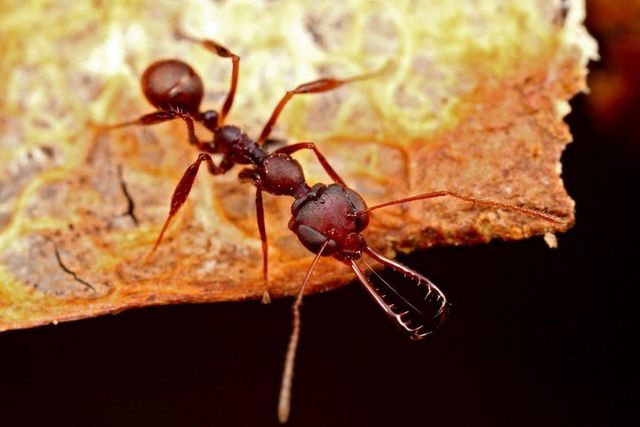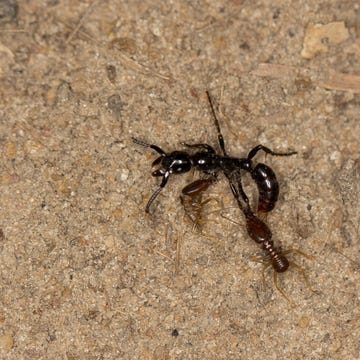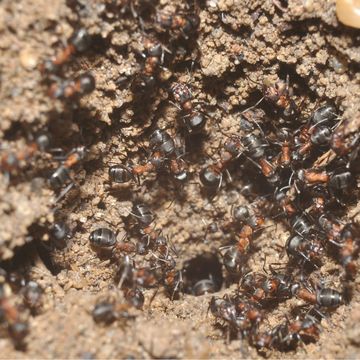Ants are among the strangest creatures on the planet, but one group of ants is stranger than most. The aptly-named 'trap-jaw ants' have gigantic mandibles that they can snap shut on their unsuspecting prey in a fraction of a second. This mechanism is extremely complicated, and now scientists are beginning to understand how it works.
The term "trap-jaw ant" can refer to hundreds of different species, many of which are only distantly related evolutionary cousins. In fact, the trap-jaw mechanism independently evolved several times in ants, and many different trap-jaw species have completely different ways to trigger their traps.
Some of these species are well understood, but others, like the genus Myrmoteras, are almost a complete mystery. Researcher Fredrick J. Larabee decided to study these ants in order to discover exactly how their jaws work:
Trap-jaw ants are found all over the world, but Myrmoteras is only found in parts of Southeast Asia, which makes studying the ants difficult. Typical Myrmoteras specimens are found using leaf-sifting methods, but this only produces dead ants. Fortunately, one of Larabee's colleagues found some live samples on a trip to Borneo.
Larabee used high-speed cameras and CT scans in order to uncover exactly how that trap-jaw functions. Unlike other ant species, Myrmoteras has two sets of muscle fibers operating its trap-jaw. One set is made of slow-twitch fibers for 'winding up' the jaw, and another set is made of fast-twitch fibers for triggering it.
These muscles work together to snap the trap-jaw closed in about half a millisecond, 700 times faster than the blink of an eye. Myrmoteras closes its jaws at speeds of around 50 miles per hour, which makes those jaws some of the fastest movements in the animal kingdom.
Source: Washington Post









